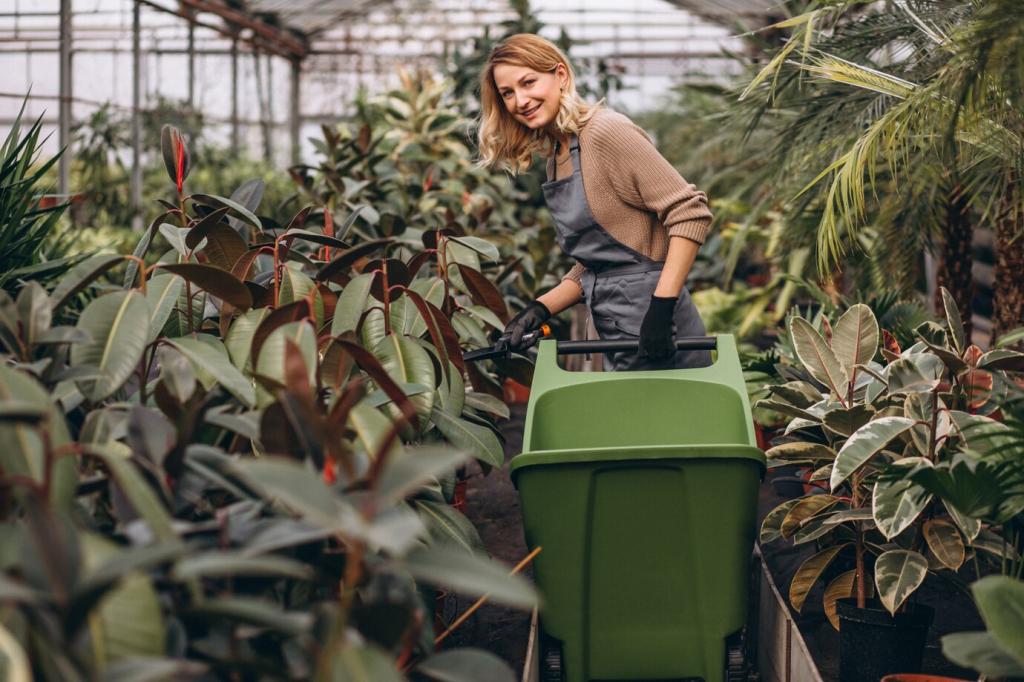Grow Up, Not Out: Vertical Gardening for City Dwellers
Chosen theme: Vertical Gardening for City Dwellers. Turn narrow balconies, sunlit windows, and blank walls into thriving green towers that feed your table, refresh your air, and calm your mind—even in the busiest city.

Why Vertical Gardens Flourish in Small Apartments
Height Becomes Your Floor Plan
When square footage is scarce, walls and window frames become prime real estate. By stacking planters, training vines, and suspending baskets, you unlock a second and third “floor” of growth without crowding walkways or blocking doors.
Light Chasing in Urban Canyons
City buildings cast shifting shadows. Vertical gardens let you lift plants toward brighter zones, bounce light with pale surfaces, and rotate pots toward south-facing windows so basil, strawberries, and pothos each get their preferred daily dose.
A Balcony Story to Inspire
Maya in a fifth-floor studio turned a narrow balcony into a herb wall using a slim rack and coco-lined planters. Weekend pesto, mint tea, and neighbors’ compliments followed—proving small spaces can host big, fragrant victories.
Smart Structures for Indoors and Outdoors
Freestanding Towers and Shelves
Adjustable metal racks, compact grow towers, and ladder shelves shine in rentals. Add trays to catch drips, strap tall units for stability, and position heavier pots lower so your green skyscraper stays steady during door drafts or curious pets.
Wall-Mounted Solutions
Modular pockets, rail-and-hook systems, and cleat-mounted planters save floor space. Find studs or use approved anchors, keep a water-safe barrier behind fabrics, and leave a finger’s width between wall and planter to promote airflow and prevent damp spots.
Repurposed with Care
Crates, shoe organizers, and old bookshelves can transform into living walls. Line porous containers, add saucers, and test weight before planting. Always confirm load limits on balconies and avoid blocking emergency access with exuberant vines or dangling baskets.

Plants That Thrive When You Grow Upward
Basil, parsley, chives, and cut-and-come-again lettuces love vertical pockets near bright windows. Strawberries trail beautifully from upper tiers, while dwarf tomatoes and peppers thrive in sturdy middle shelves with six or more hours of direct light.
Watering, Feeding, and Cleanliness Made Easy
Irrigation Without the Flood
Use self-watering planters, capillary mats, or a slow-drip bottle for top tiers that feed lower pots. Always include catch trays, water early to reduce evaporation, and keep a hand mister nearby for ferns and seedlings that crave humidity.
Nutrition for Vertical Vigor
Lightweight mixes with coco coir and perlite drain fast, so offer diluted liquid fertilizer every two to three weeks. Top-dress with worm castings, refresh potting mix seasonally, and watch leaves for cues—pale green often signals gentle feeding time.
Pests, Pruning, and Hygiene
Wipe leaves monthly, trim runners, and remove spent growth to boost airflow. Yellow sticky cards catch gnats, while neem or insecticidal soap tackles early issues. Clean drip trays regularly so your vertical oasis stays fresh, not swampy.
Design a Garden That Tells Your Story

Start high with sunny thyme and trailing strawberries, drift to mid-level marigolds for brightness, and finish low with mint and lavender where brushes release fragrance. This gradient turns routine watering into a small daily delight.
Join the Community and Grow Together
What’s your trick for catching drips or training vines along a window? Drop a comment with photos or sketches, and inspire someone whose blank wall is waiting for that first brave planter.
Join the Community and Grow Together
Join our vertical mini-challenges: herb wall week, microgreen sprint, or balcony trellis glow-up. Subscribe to get printable checklists, plant pairing ideas, and reminders timed to real urban seasons and shifting light angles.

